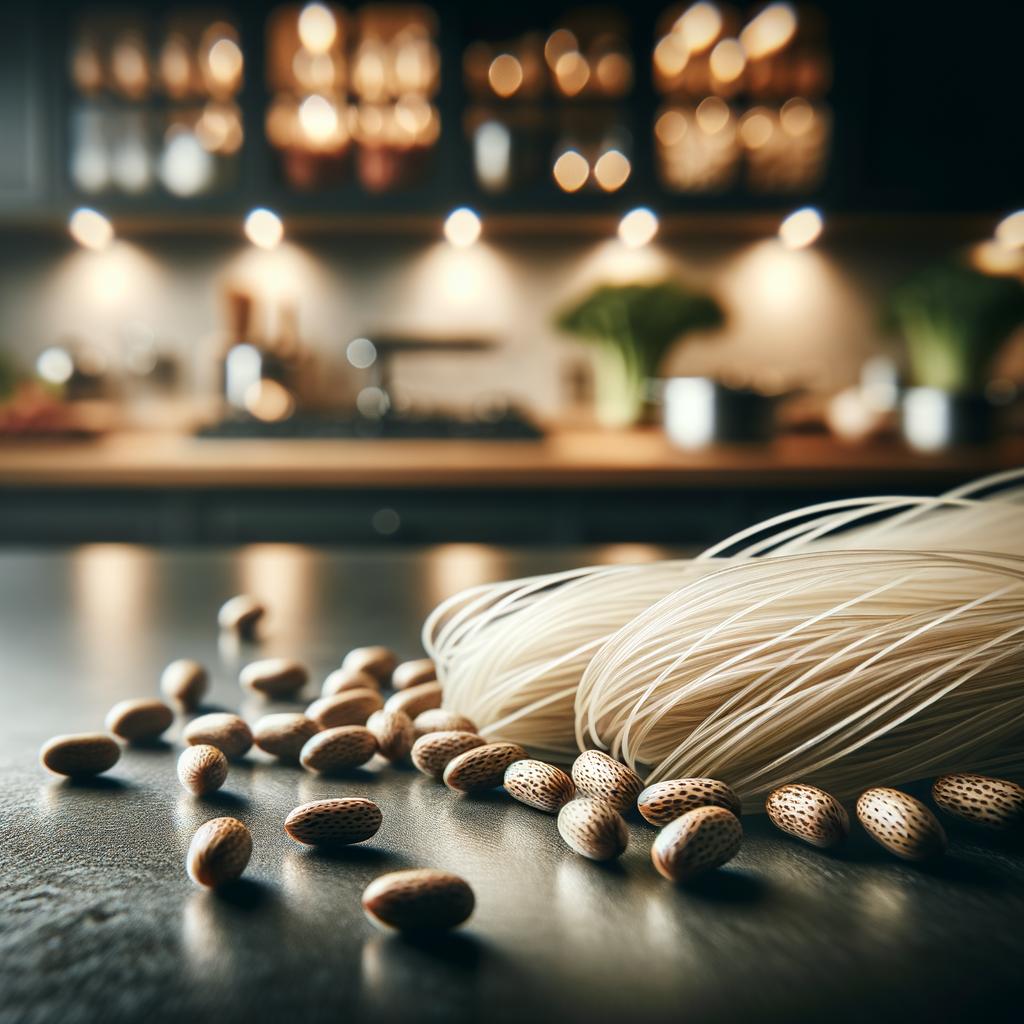Bean Threads

Description
Bean threads, also known as cellophane noodles, glass noodles, or Chinese vermicelli, are a type of transparent noodle made from the starch of mung beans. They are long, thin, and when cooked, become almost translucent, hence their various names. Their texture is uniquely slippery and chewy, offering a delightful contrast in many dishes. The flavor of bean threads is mild and neutral, making them a versatile ingredient that absorbs the flavors of the ingredients they are cooked with. One unique characteristic of bean threads is their ability to become transparent when cooked, unlike most other types of noodles.
Primary Uses
Bean threads are extensively used in various Asian cuisines, including Chinese, Korean, Thai, and Vietnamese. They are a key component in hot pots, stir-fries, spring rolls, and salads. In addition to acting as a delicious carrier of flavors, bean threads are also used to provide texture and visual appeal to dishes. In some cultures, they symbolize longevity and are therefore served during birthday celebrations and New Year feasts.
History
The exact origin of bean threads is uncertain, but they have been a staple in East Asian cuisines for centuries. They were likely first created in China, where the cultivation of mung beans dates back over 2,000 years. Over time, their use spread throughout Asia, each region incorporating the noodles into their local cuisine in unique ways. There's a charming folklore in China that the longer the noodle, the longer your life will be, making bean threads a popular dish during birthdays and New Year celebrations.
Nutritional Information
Bean threads are a good source of carbohydrates, providing energy for the body. They are low in fat and contain no cholesterol, making them a heart-healthy choice. While not particularly high in vitamins and minerals, they do provide some iron and calcium. Compared to wheat-based noodles, bean threads are gluten-free, making them a suitable choice for those with gluten intolerance or celiac disease. However, they are relatively high in calories, so portion control is essential for those watching their weight. Despite their caloric content, their versatility and unique texture make them a valuable addition to a balanced, flavorful diet.

